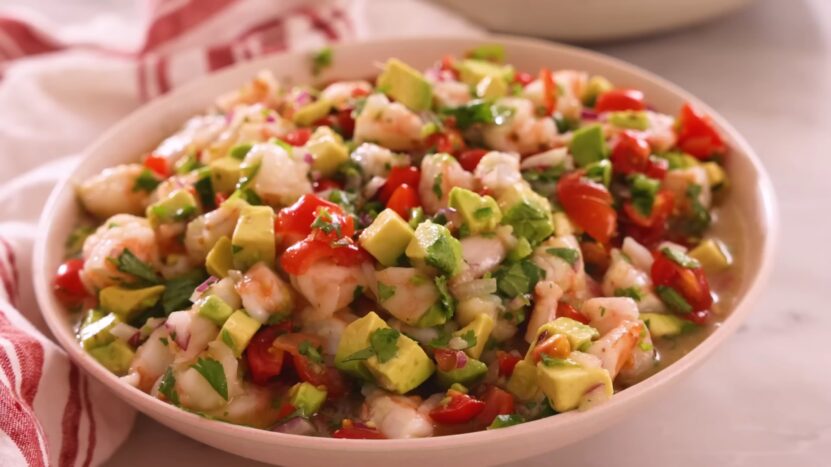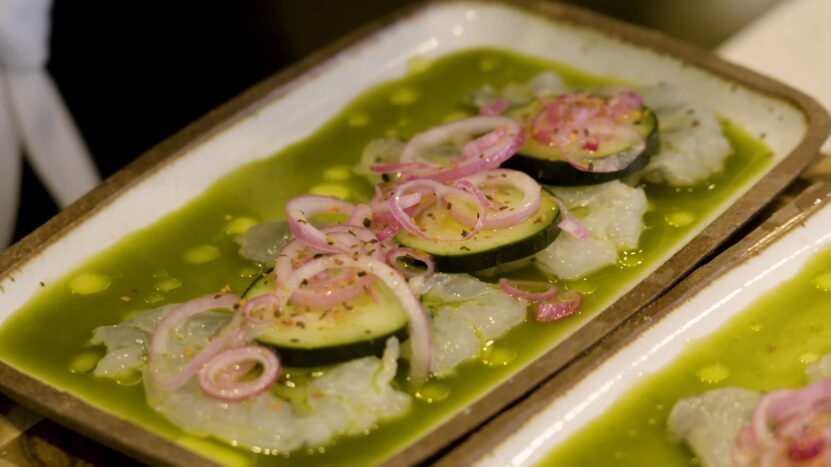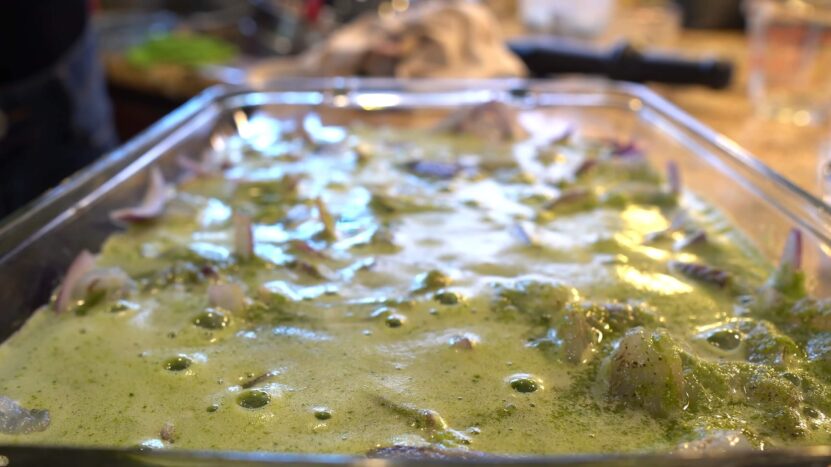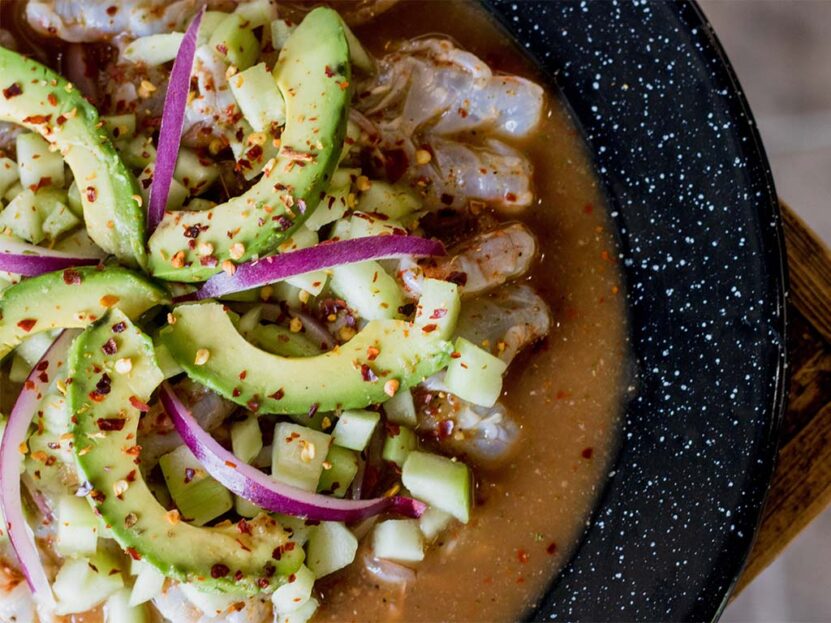When it comes to the wide range of exotic recipes from all around the world, two dishes stand out for their vibrant flavors and refreshing simplicity: a seafood specialty from the Pacific coasts and a spicy sensation from Mazatlan, Sinaloa.
While both feature the primary use of fresh seafood and a citrus-based marinade, they are distinct in their preparation, ingredients, and regional heritage.
The Pacific coast dish, with origins tracing across Latin America, is a testament to the diversity of seafood preparation. It’s a harmonious blend of fish and citrus, often complemented with a variety of regional accompaniments.
This dish not only tantalizes the taste buds but also showcases a unique method of cooking through acid denaturation, making it a fascinating subject for culinary enthusiasts.
On the other hand, the Sinaloa creation is a vivid representation of Mexican culinary tradition. Originating from the mountains of Sinaloa, it combines the simplicity of fresh ingredients with the intense heat of local chilies. This dish, primarily featuring shrimp, has become a staple at social gatherings, known for its bold flavors and refreshing qualities.
How Are They Different?
Both are celebrated for their use of fresh seafood and citrus, but they diverge significantly in flavor, preparation, and cultural background. While some people may mistake one for another, there are some unique differences that makes these two dishes quite different.
Origin and Cultural Significance

Ceviche boasts a diverse heritage, with roots that potentially trace back to Peru, Central America, and the South Pacific. It’s more than a dish; it’s a culinary expression that varies across regions, reflecting local seafood varieties and gastronomic traditions.
Aguachile, originating from Mazatlan, Sinaloa, is deeply entrenched in the cultural fabric of its region. Born in the Sinaloa mountains, it’s a dish that marries mountainous simplicity with coastal freshness, often featured in social gatherings and paired with music and beer.
Ingredients and Preparation
Ceviche typically includes a mix of seafood like fish, shrimp, or octopus, marinated in citrus juices such as lemon or lime. It’s enriched with onions, tomatoes, cilantro, and sometimes chilies or avocado.
The dish often incorporates additional flavors from sauces like ketchup, Maggi, and Worcestershire. In contrast, aguachile is primarily prepared with shrimp, marinated in lime juice and spiced with chiltepin chiles. Known for its heat, it also includes chilies like serrano or jalapeño. Accompaniments like cucumber, onion, and avocado underscore its focus on freshness.
Flavor Profile and Serving Style

Ceviche is celebrated for its refreshing, tangy flavor, where citrus juice “cooks” the seafood. The balance of acidity and sweetness, served chilled, is garnished with ingredients like black pepper and chili peppers.
Aguachile stands out for its intense heat and bold flavors. Chiltepin chile and other hot peppers provide a spicy kick, balanced by the coolness of cucumber and creaminess of avocado. It’s served immediately after preparation to maintain the freshness and crispness of the ingredients.
Marination Time and Texture

Ceviche requires a longer marination, typically over 20 minutes, allowing the seafood to be thoroughly “cooked” and infused with the marinade’s flavors. This results in a firmer texture.
Aguachile, on the other hand, is marinated briefly, usually around 10 minutes. This short marination ensures the shrimp remains tender and slightly crunchy, emphasizing the seafood’s freshness.
Comparison Highlights
| Aspect | Ceviche | Aguachile |
|---|---|---|
| Origin | Diverse Latin American origins | Rooted in Mazatlan, Sinaloa |
| Main Ingredients | Variety of seafood | Primarily shrimp |
| Flavor Profile | Refreshing and tangy | Fiery and bold |
| Marination | Longer duration | Shorter duration |
| Serving Style | Chilled with various garnishes | Immediate serving with crisp ingredients |
Why the Confusion?
The mix-up between ceviche and aguachile is common, and it primarily stems from their superficial similarities. Both dishes originate from Latin American culinary traditions and are based on the principle of marinating seafood in citrus juices. This fundamental similarity often leads to confusion, despite their distinct characteristics.
Firstly, their visual resemblance plays a significant role. Both ceviche and aguachile typically feature a colorful medley of seafood, onions, and herbs, doused in a citrus-based marinade.
To the untrained eye, these dishes can appear almost identical, especially when served in a restaurant or at a social gathering. Secondly, the flavor profiles of ceviche and aguachile, while distinct, have overlapping elements.
Both dishes are celebrated for their fresh, tangy, and zesty tastes. Ceviche often has a milder, more balanced flavor, while aguachile is characteristically spicier. However, the dominant presence of citrus and herbs can mask these differences, leading to confusion. Also, it is quite common for people from different regions to mistake one dish for another.
For example, a lot of them think that Nagiri and Sashimi are the same type of food. Moreover, the popularization and fusion of international cuisines have led to variations of these dishes that blur traditional lines. Chefs and home cooks alike experiment with ingredients and preparation methods, creating hybrid versions that combine elements of both ceviche and aguachile.
More About Ceviche
Ceviche, a dish synonymous with the vibrant culinary culture of Latin America, is a celebration of fresh seafood and zesty flavors. Its origins are a topic of historical debate, with theories suggesting roots in Peru, Central America, and even influenced by the South Pacific. Despite its varied heritage, ceviche has become a staple in many Latin American countries, each adding its unique twist to this classic dish.
Main Features
At its core, ceviche is an amalgamation of fresh, raw fish and seafood cured in citrus juices, predominantly lemon or lime. The acid in the citrus juice causes denaturation of the proteins in the seafood, effectively “cooking” it without the use of heat. This process imparts a tender texture to the fish, a characteristic hallmark of well-prepared ceviche.
Variations Across Regions
While the basic premise of ceviche remains constant, regional variations are abundant. In Peru, considered by many as the birthplace of ceviche, the dish is often prepared with sea bass (corvina) and includes ingredients like red onions, chili peppers, and sweet potato. Ecuadorian ceviche, on the other hand, typically features shrimp and is served with the addition of popcorn or nuts.
Mexican ceviche often includes a broader variety of seafood, like octopus and squid, in addition to fish. It’s common to find this version adorned with ingredients like tomatoes, cilantro, avocado, and complemented with spicy sauces.
Ingredients and Preparation
The ingredient list for a classic ceviche typically includes:
- Fresh fish or mixed seafood
- Fresh lime or lemon juice
- Red onions
- Chili peppers (like jalapeño or habanero)
- Cilantro
- Salt and pepper
- Optional additions: avocado, tomatoes, cucumber, or sweet potato
Preparing ceviche involves a delicate balance of marinating time and flavor infusion. The steps are relatively simple but require attention to detail:
- Selecting Seafood: The freshness of the fish is paramount. Typically, white-fleshed ocean fish like sea bass, halibut, or snapper are used. Shellfish such as shrimp or squid can also be included.
- Curing the Seafood: Cut the fish into even, bite-sized pieces. In a glass or ceramic bowl, combine the seafood with freshly squeezed lime or lemon juice. Ensure the juice covers the fish completely. This acidity is crucial for “cooking” the seafood.
- Marination: The marinating process is where the magic happens. The seafood should be left in the citrus juice for about 15 to 30 minutes, depending on the desired level of “doneness.” The fish will change color, becoming opaque as it cures.
- Adding the Aromatics: After the initial marination, mix in thinly sliced red onions, chopped chili peppers, and cilantro. Season with salt and pepper to taste. Some recipes also include diced tomatoes, cucumber, or avocado for added texture and flavor.
- Final Touches: Before serving, give the ceviche one final stir to blend all the flavors. It is typically served chilled, making it a refreshing appetizer or main dish.
Serving Practice
Ceviche is often enjoyed as a starter but can also be a light main course, especially in warmer climates. It’s typically served with corn on the cob, sweet potato, or plantain chips in South America. In Mexico, it’s common to find it accompanied by tortilla chips or tostadas.
Why is Aguachile so Popular?
Aguachile, literally translating to “chile water,” is a dish that celebrates the freshness of the sea and the heat of the chiles. It is traditionally made with shrimp, which are marinated in a vibrant mixture of lime juice and chilies, primarily chiltepin chile. The origins of aguachile can be traced back to the Sinaloa mountains, where it was originally prepared with shredded meat. Over time, as the dish traveled to the coast, seafood became the star ingredient.
Ingredients and Simplicity
The ingredient list for aguachile is refreshingly straightforward, focusing on quality and freshness:
- Fresh shrimp, cleaned and deveined
- Lime juice, freshly squeezed
- Chiltepin chiles (or other hot peppers like serrano or jalapeño)
- Cucumbers, thinly sliced
- Red onions, thinly sliced
- Avocado, sliced (optional)
- Salt and pepper to taste
This simplicity is part of what makes aguachile so popular. It’s a dish that requires minimal cooking and showcases the natural flavors of its components.
The Recipe and Instructions
Preparing aguachile involves a few steps that highlight the freshness of the ingredients:
- Preparing the Shrimp: The shrimp should be fresh, cleaned, and deveined. They are often butterflied or sliced in half lengthwise to allow the marinade to penetrate more effectively.
- Making the Chile Water: The key to aguachile is its spicy marinade. Blend fresh lime juice with chiltepin chiles (or your choice of hot peppers), salt, and a little water to create a fiery yet tangy liquid.
- Marinating the Shrimp: Pour the chile water over the shrimp, ensuring they are completely submerged. The marinating process is quick – usually about 10 minutes – enough time for the shrimp to turn pink and absorb the flavors.
- Adding the Vegetables: After the shrimp have marinated, add thinly sliced cucumbers and red onions to the mix. Some variations also include sliced avocado for a creamy texture.
- Serving: Aguachile is typically served immediately after preparation, accompanied by tostadas or crackers. This immediate serving helps maintain the crisp texture and fresh taste of the ingredients.
Popularity and Cultural Significance
The popularity of aguachile is rooted in its bold and straightforward flavors. The combination of spicy chiles and tangy lime with the sweet, fresh shrimp creates a flavor profile that is both invigorating and satisfying. Its ease of preparation makes it a favorite for home cooks and professional chefs alike.
FAQs
What is the meaning of aguachile?
Aguachile is a Mexican dish of raw shrimp cured in lime juice and chili peppers. The name means “chili water” in Spanish.
What is another name for ceviche?
Ceviche is also known as cebiche, seviche, or sebiche. It is a common name for dishes of raw fish or seafood marinated in citrus juice, usually lime or lemon.
Is all ceviche raw?
No, not all ceviche is raw. Some versions of ceviche use cooked seafood, such as shrimp, octopus, or crab. Other ingredients, such as corn, sweet potato, or plantain, may also be cooked before adding to the ceviche.
Why is aguachile so spicy?
Aguachile is spicy because it uses fresh or dried chili peppers, such as jalapeños, serranos, or habaneros, to flavor the lime juice marinade. The amount and type of chili peppers can vary depending on personal preference and regional variations.
Is ceviche safer than sushi?
Ceviche and sushi both have some risks of foodborne illness, especially if the fish or seafood is not fresh or handled properly. However, ceviche may have a slight advantage over sushi, because the acid from the citrus juice can kill some bacteria and parasites that may be present in the raw fish or seafood.
Last Words
The confusion between these two dishes, though understandable given their similarities, underscores the importance of recognizing and appreciating the unique characteristics of regional cuisines. While they share a common foundation in seafood and citrus, ceviche and aguachile each tell a different story through their flavors, ingredients, and preparation methods.
